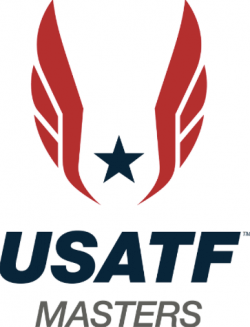USAMTF have launched a campaign that is Cash for Medals, believing that by providing a financial incentive will result in the “better” athletes turning up to the championships and winning!
In a plan to boost U.S. medal fortunes at the upcoming WMA World Indoor Championships in Toruń, Poland, USA Track and Field has launched a $125,000 program to induce six centenarians — and more than 300 other world-class Americans over 35 — to enter the late March meet.
Former elite decathlete Rex Harvey, chairman of the USATF Masters Track & Field Committee, announced details on Christmas Eve.
Under the plan, any American currently listed in the top six in the world is eligible for up to $2,000 — $1,000 for travel and housing and $1,000 for winning medals — $400 for gold, $200 silver and $100 bronze. (Every relay member would get the same as well.)
As of Saturday, Harvey said, 17 had applied for grants (with two ineligible because of age or performances).
Four men and two women over 100 are on USATF’s radar: runner Orville Rogers (eligible for a $1,000 travel grant), thrower Frederick Winter ($1,000), jumper and thrower Paul Miller ($650) and shot putter George Rowswell ($250). Also sprinters Julia Hawkins ($800) and Ida Keeling ($350) — 102 and 103, respectively.
With four weeks left to Toruń’s entry deadline of Jan. 29, only 55 Americans have registered.
At the 2018 world masters outdoor championships in Malaga, Spain, 440 pay-their-own-way U.S. athletes combined to make Team USA fourth in the medal standings — taking home 162 medals, including 62 golds.
Malaga was supposed to be the launch pad for the grants-and-prize-money program, but no sponsor could be found.
According to Harvey, about $60,000 has been raised for Toruń grants and prizes. The remaining $65,000 is expected in coming months.
“[USATF] CEO Max Siegel and COO Renee Washington [have] stepped forward and allocated up to $25,000 from USATF … towards this effort,” said the original announcement. “In addition, an anonymous donor has pledged another $25,000 as a base for a matching donation program.”
Organizers said that after only a few days, “and with no formal solicitation,” an added $10,000 has been committed. “In addition, virtually all members of the MTF Executive Committee have made individual commitments to contribute.”
Athlete reaction has been generally positive, with several saying the grants have motivated them to enter the March meet. Some were critical of the rollout, saying they hadn’t been contacted.
Middle-distance star Anselm LeBourne of West Orange, New Jersey, says the grant program helped him decide to run at Toruń. (He’s poised to collect $850 for travel and housing.)
A decade ago, the college professor led a call for a similar subsidy program for elite masters athletes, but “had no clue” about being eligible now until he was sent a link New Year’s Day.
“There must be a way for the masters athletes to know of this type of program,” said LeBourne, a former Wall Street analyst who turns 60 only days after the meet. “The masters association must now find creative ways to inform masters athletes about this program.”
He suggested that Indianapolis-based USATF inform eligible athletes via email.
“Facebook, Instagram and Twitter should also be utilized,” said LeBourne, who has set more than a dozen world age-group records. “They can post the information on different masters Facebook pages as well.”
(Details were posted on the USATF Masters website and Facebook group, but under the vague headline “Team USATF Toruń W#1 Program Status.”)
Although LeBourne called the program long overdue, he applauded Harvey on the initiative.
“It’s always good to have patience because the masters organization appears … more reactive than proactive,” he said.
Running coach Sonja Friend-Uhl of Boca Raton, Florida — who at age 47 became the oldest American woman to break 5 minutes in the indoor mile — won two gold medals at her lone world masters meet (Sacramento 2011).
“I was not considering going before this because I could not justify such an expense against my family budget,” she told Times of San Diego. “This assistance would help cover most of the travel/lodging costs, which removes a big obstacle.”
Ranked first worldwide in the 1500 (and second in the 800), Friend-Uhl is eligible for a $1,000 travel grant.
Sprinter James Chinn, a North County architect and assistant coach at CSU San Marcos who recently turned 60, says he wasn’t planning on applying for a grant, “but I might throw my hat in the ring.”
“I think it will help raise the medal count, but it seems like most people managed to get to worlds before this program was around,” says Chinn, who’s attended eight world meets and won about 18 medals.
A veteran of 10 World Masters Athletics championships (where he’s won 20 medals), Wilson said cost isn’t the only factor that impeded U.S. athletes from traveling to international competition, “but this program could reduce that cost barrier.”
Sprinter Charles Allie of Pittsburgh, named USATF Masters Athlete of the Year recently after setting several world records in the 70-74 age group, says he intends to apply for a grant.
Including his first world meet in 1999, he’s attended 11 indoor or outdoor world meets, earning about 48 medals.
“I do believe those athletes who are ranked nationally and internationally, but are unable to attend and compete in the world championships, will benefit from receiving financial assistance,” Allie said via email.
The World Masters Athlete of the Year in 2013, Allie said the presence of more ranked masters stars “will definitely be welcomed and a plus in raising the Team USA medal count.”
Bob Lida of Wichita — World Masters Athlete of the Year in 2017 — has won 20 individual gold medals at his nine world meets and says U.S. medal counts will rise “without question.”
But the 82-year-old world-record holder says there may be a problem getting younger age groups involved, “as they are still working and must take family vacation time.”
World-champion sprinter Allan Tissenbaum of Pittsburgh, an orthopedic surgeon, said he learned of the grants via Facebook but would like to see stricter criteria based on need.
“I would not apply for any monies that can be better utilized by others who have more of a need than I do,” he said. “While this program may increase our medal count, these are really still medals from a really expensive all-comers meet.”
Rather than win medals at world meets, he’d rather see USATF put more money put into expanding the number of masters track participants in the United States, “where I feel we are lacking compared to many other countries.”
He added: “I am not sure when worlds became a competition for medals. My biggest pet peeve is people who equate masters accomplishments with open athletes. This is still a hobby for most and not a job.”
Also forgoing help is Rita Hanscom of San Diego, who in 2009 was named a World Masters Athlete of the Year.
A deputy state attorney general whose late husband was a Superior Court judge, multi-eventer Hanscom said she wouldn’t request a grant because “luckily I can afford to pay for this.”
She’ll be two months shy of age 65, so her expectations for medaling in Poland as low, she said. (She already has dozens after competing at 11 world championships.)
But, she said, “anything that brings more people to the worlds is a terrific idea.”
Kathy Bergen of La Cañada Flintridge, a sprinter and jumper with many world titles and records, said she was thrilled when a friend called her a few days ago about being eligible for a $1,000 grant.
Still, she’ll pass on Poland, saying her first event would be March 24 and last March 29.
“We would have to get there by 3/21, the latest,” said the 79-year-old who won golds and set records at world meets in Sacramento, France and Australia. “The meet is too spread out. I know these cities like our tourist dollars, but my focus is on the competition not touring.”
Also staying home is Damien Leake of Van Nuys, a professional actor in his late 60s who set a world record for 100 meters last summer.
Masters Hall of Famer Irene Obera of Fremont in the Bay Area will take advantage of the $1,000 earmarked for her, said her friend and coach Alan Kolling.
“It became increasingly difficult for Irene to afford to travel abroad for competition,” Kolling said, “and she first retired in 2000, and then again after a brief comeback (to the 2005 Worlds).”
He said it took a lot of persuasion on his part for Obera, now 85, to make a serious return in 2010.
“This incentive program is the first time Irene has received this type of support [on] either the national or local level,” Kolling said, “and in her case it definitely works: Irene will now go to Toruń and she will undertake as many events as her health and fitness level will allow.”
How did Kolling hear about the program?
“I received a call from Rex Harvey, who described the program in detail and referred me to the website application,” he said.
In adopting financial aid, masters join the elite cadre of USATF, which has been offering similar subsidies, called International Competitive Opportunities Grants, of up to $2,000.
U.S. athletes also win prize money for medaling in the Olympics and IAAF world championships — “bonuses” at the 2016 Rio Olympic Games were $25,000 (gold), $15,000 (silver) and $10,000 (bronze).
One is establishing a $5 million endowment so the travel and prize awards can continue forever.
“This is an aspirational goal at this point,” he said. “No decisions have been made about investment decision-making or management of the funds. All of this will begin to be addressed after we get Toruń behind us.”
Harvey wouldn’t share details on the mystery backer.
“The donor has requested anonymity and we are honoring that,” he said. “If the donor wishes to step forward at some point, they will. It’s up to them.”
If $125,000 isn’t raised, where will cuts be made?
Stressing the word if, Harvey said: “If any cuts are needed, they will probably be in the medal reimbursements. By then, we will know more about the the total donations that we have in hand.”
He said any reductions of the proposed $400, $200 and $100 prizes would be proportional.
“We do expect money to continue to come in after the deadline,” he said, “including a sizable gift around the time of the meet.”
Marathons and other major road races have awarded money to top age-groupers for decades, and individual USATF associations have parceled out travel grants in recent years. But the national office cutting checks is both historic and ironic.
In the mid-1970s, when the Amateur Athletic Union ran track in America, any hint of being paid to run was a scandal — and also against IAAF rules. “Professionals” who competed in U.S. track meets could even “taint” amateurs in the same event, causing their expulsion from the sport.
But under the leadership of San Diego lawyer David Pain and Bob Fine of New York (who wrote the first world masters constitution), former professionals over 40 were allowed to compete alongside amateurs.
“By taking a firm position, we shall see that archaic, petty-fogging rules are exposed to public scrutiny and attendant ridicule, with the resultant rejection and modification thereof,” Pain wrote in 1973.
(The IAAF eventually granted a masters exemption and then gave in altogether for elite pros.)
In other countries, travel stipends to world masters meets have backfired.
“Taiwan and South Korea are two associations that tried this,” said a Hong Kong track official in 2011. “It worked great for a while, encouraging participation. But the eventual result was disaster.”
The official said that when athletes ran into economic hardship and support ended, “people refused to participate any more. They had come to count on the subsidies and when the money stopped, so did they.”
Source: Pro Track Star at Age 100? USATF Offers Travel Aid, Money for Medals at World Meet – Brinkwire



